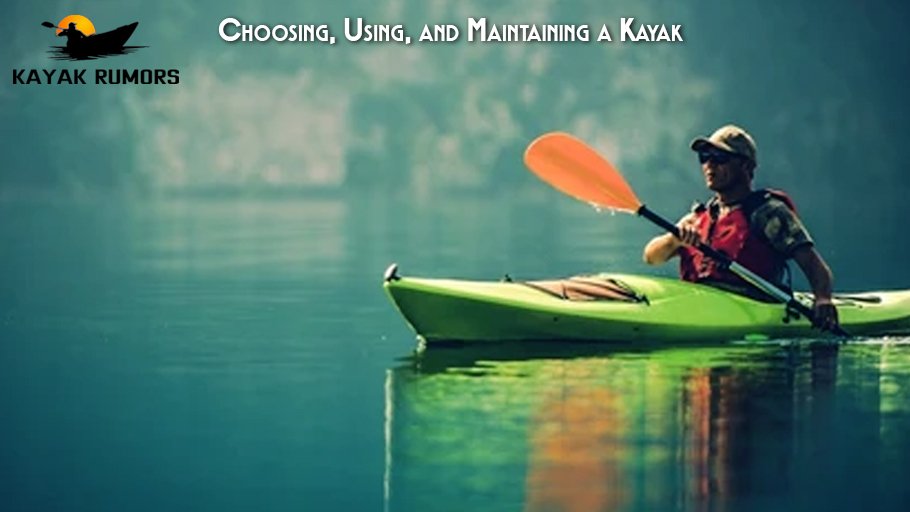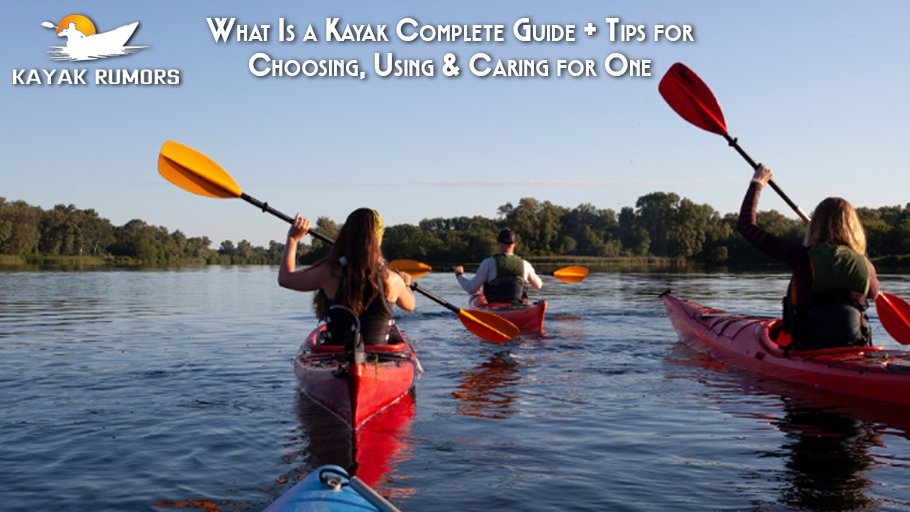What is a kayak? A kayak is a small, narrow watercraft that is typically propelled by a double-bladed paddle. Kayaks have been used for thousands of years and are popular for recreation, fitness, fishing, and adventure. Their simple design and versatility make them suitable for many types of water, from calm lakes to fast-moving rivers and open seas.
Many people find kayaking enjoyable because it combines physical activity with the peacefulness of nature. Whether you want to explore serene lakes, tackle exciting whitewater rapids, or enjoy fishing from a stable platform, a kayak can be the perfect choice. In this guide, we will explore everything you need to know about kayaks — from their design and types to how to choose, use, and maintain them safely.
Understanding Kayaks
What is a Kayak?
A kayak is a small boat designed to be paddled by a single person, though some kayaks can hold two or more. It has a narrow shape, which helps it move smoothly through the water. Most kayaks have a cockpit where the paddler sits, using a double-bladed paddle to move and steer.
Unlike larger boats, kayaks are lightweight and easy to transport, making them accessible to many people. Their design allows them to be stable and maneuverable, ideal for exploring different water environments.
History and Origin of Kayaks
Kayaks have been around for thousands of years. They were originally developed by the Inuit, Yupik, and Aleut peoples of the Arctic regions for hunting and transportation. These early kayaks were made from wood or bone frames covered with animal skins, designed to be light and strong enough to move quietly on the water.
Today’s kayaks have evolved a lot, but still borrow the basic principles of the traditional design. Modern kayaks are made with new materials and feature advanced shapes, but their roots come from practical and efficient use.
Kayak vs Canoe: What’s the Difference?
Many people confuse kayaks with canoes, but there are clear differences:
- Kayaks: The paddler sits with legs stretched out in front and uses a double-bladed paddle.
- Canoes: The paddler usually kneels or sits on a bench and uses a single-bladed paddle.
Kayaks are typically enclosed, while canoes are open on top. These differences affect how each boat handles water and what activities it suits best.
Types of Kayaks and Their Uses
Kayaks come in many forms to suit different activities and water conditions. Some common types include:
- Recreational Kayaks: Designed for calm waters like lakes or gentle rivers. They are stable and easy to use for beginners.
- Touring Kayaks: Built for longer trips on open water with storage space for gear.
- Whitewater Kayaks: Small, agile kayaks designed for fast-moving rivers and rapids.
- Inflatable Kayaks: Portable and easy to store, suitable for casual use.
- Fishing Kayaks: Equipped with holders and space for fishing gear.
- Sea Kayaks: Longer and narrower for open water and coastal trips.
- Tandem Kayaks: Made for two paddlers.
- Sit-on-Top vs Sit-Inside Kayaks: Sit-on-top kayaks are open on top and easier to get on and off, while sit-inside kayaks offer more protection from the water.
Each type serves a specific purpose, and choosing the right kayak depends on where and how you plan to use it.
Parts of a Kayak
To understand kayaks better, here are the main parts:
- Hull: The bottom of the kayak that contacts the water.
- Deck: The top surface.
- Cockpit: The seating area.
- Seat: Where the paddler sits.
- Footrests: Adjustable supports for your feet.
- Rudder or Skeg: Helps with steering in some kayaks.
- Hatch: Storage compartments, mostly in touring kayaks.
Knowing these parts will help you understand how kayaks work and what to look for when buying or using one.
Choosing, Using, and Maintaining a Kayak

How to Choose the Right Kayak
Choosing a kayak depends on several factors:
- Purpose: Recreational, fishing, touring, whitewater, or fitness.
- Skill level: Beginners should pick stable and easy-to-handle kayaks.
- Size and weight: Consider who will be paddling and how to transport it.
- Storage space: Check if you have room to store the kayak.
- Budget: Prices vary widely depending on materials and design.
Trying different types at rental centers or demo days can help make a decision.
Kayak Materials
Kayaks are made from various materials, each with pros and cons:
- Polyethylene Plastic: Durable, affordable, but heavier.
- Composite (Fiberglass or Carbon Fiber): Lightweight and faster but expensive and less durable.
- Inflatable: Made from PVC or Hypalon, portable but less rigid.
- Wooden or Folding Kayaks: Classic and compact, though more niche.
Choosing the right material affects durability, weight, and cost.
Essential Kayaking Gear
Besides the kayak, you need:
- Paddle: Size and type matter for comfort and efficiency.
- Personal Flotation Device (PFD): Safety first, always wear one.
- Spray Skirt: Keeps water out of the cockpit in rough conditions.
- Clothing: Dress for the water temperature, not just the air.
- Other gear: Dry bags, helmets (for whitewater), whistles, and safety lights.
Transport and Storage
Transporting kayaks can be done via roof racks, trailers, or even by hand for lightweight models. Always secure the kayak properly during transit.
Store kayaks indoors when possible, or use covers to protect them from sunlight and weather damage.
Kayak Maintenance
Regular cleaning with fresh water helps remove dirt and salt. Inspect your kayak for cracks or damage, especially after rough use. Minor repairs can be done with patches or sealants.
Skills, Safety, and Real-Life Application
Basic Kayaking Skills
Learning proper paddling technique helps with efficiency and reduces fatigue. Basic strokes include the forward paddle, sweep stroke (for turning), and draw stroke (to move sideways).
Learning how to enter and exit your kayak safely reduces the risk of tipping. Practicing in calm water is recommended before moving to more challenging conditions.
Kayaking Safety Tips
Always check the weather and water conditions before heading out. Avoid kayaking alone until you have some experience. Use a PFD at all times, and carry safety gear like whistles or phones in waterproof cases.
Learn basic rescue techniques or attend safety courses. Know local regulations and respect wildlife and other water users.
Kayaking for Fitness and Wellness
Kayaking is an excellent workout for the upper body, core, and legs. It also offers mental relaxation through time spent outdoors.
Kayaking with Kids or Pets
With proper gear and precautions, kayaking can be a family activity. Use tandem kayaks or specially designed seats for kids and pets.
Accessibility
Adaptive kayaks and equipment are available to support people with disabilities, opening the sport to more individuals.
Planning a Kayaking Trip
Map your route, pack essentials, and inform someone about your plan. Always have a backup plan in case of emergencies.
Real Kayaker Stories
Many kayakers find joy and challenge in the sport. Beginners often recommend starting slow and learning from experienced paddlers.
FAQs About What Is a Kayak
1. What is a kayak used for?
Kayaks are used for recreation, fitness, fishing, touring, and exploring various water bodies like lakes, rivers, and oceans.
2. How do I know which kayak is right for me?
Consider your experience level, the water you’ll be on, and what activities you want to do. Recreational kayaks suit beginners, while touring kayaks fit longer trips.
3. Is kayaking hard for beginners?
Kayaking can be easy to learn with basic instruction and practice, especially using stable recreational kayaks.
4. What should I wear when kayaking?
Wear clothing suitable for the water temperature. Quick-drying, layered clothing and water shoes are good choices.
5. Can I kayak alone as a beginner?
It’s safer to kayak with others until you gain confidence. If kayaking alone, inform someone about your plans and stay close to shore.
Trusted Resources For You
Let’s Wrap Up: What Is a Kayak?
What is a kayak? It’s more than just a boat — it’s a way to connect with nature, stay active, and enjoy water adventures safely and confidently. Whether you’re a beginner or an experienced paddler, understanding the basics, choosing the right kayak, and practicing safety will make your time on the water rewarding.
At Kayak Rumors, we are here to help you learn, choose, and enjoy kayaking with expert advice and honest reviews. Ready to start your kayaking journey? Explore our gear guides and join the community of paddlers today. If you have questions or would like to share your experiences, please leave a comment below — we love hearing from fellow kayakers!



